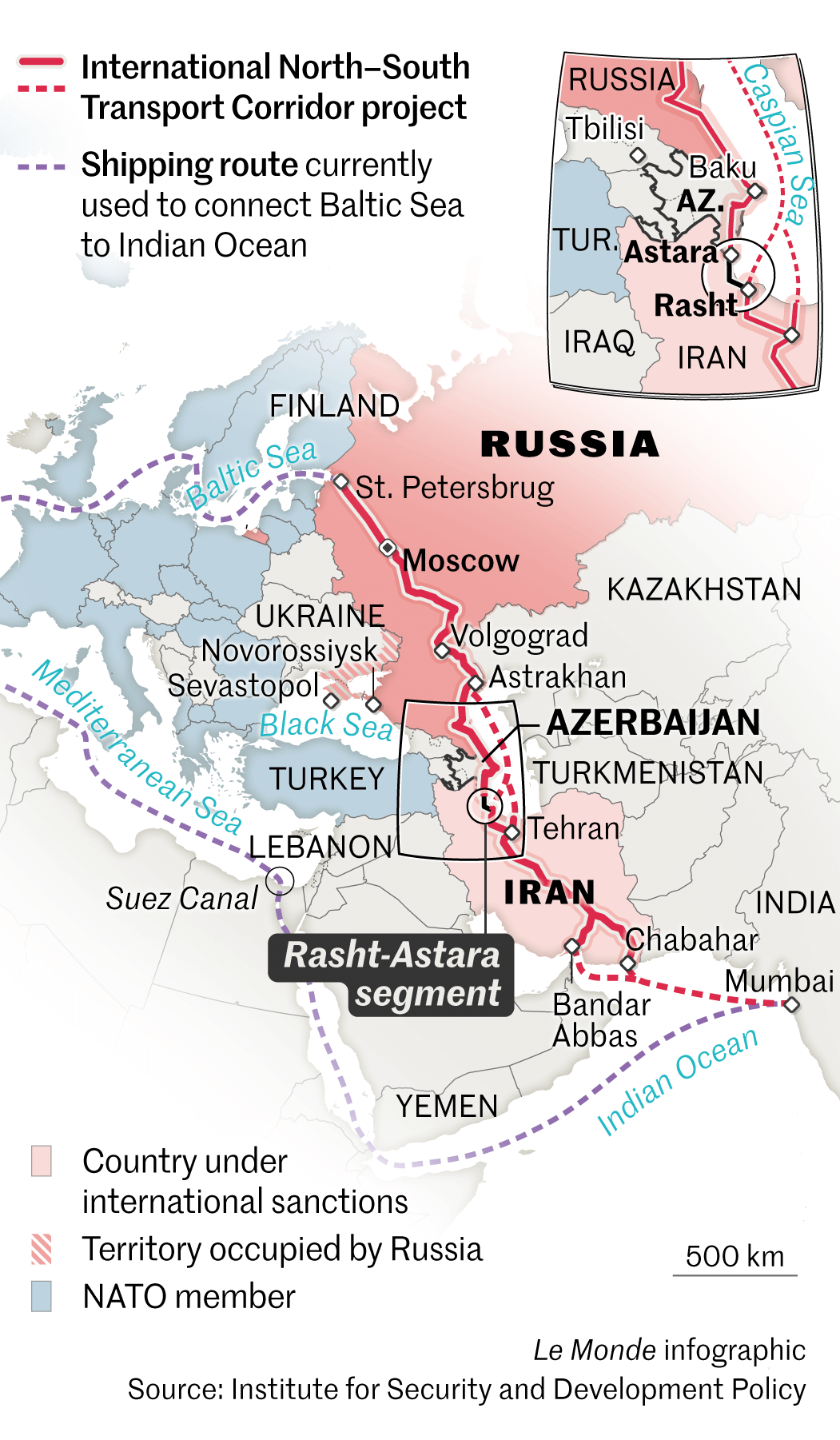


Russia, Iran and the fast track to a new world order
In DepthBecause of Western sanctions, Moscow is redirecting its exports to Asian and Gulf countries, and now an old project for a railroad along the Caspian Sea could become a reality – another step towards Putin's new world order built around the Global South.
A great rapprochement between Iran and Russia is underway, on the shores of the Caspian Sea. In recent years, Moscow and Tehran have been steadily increasing their trade across this shared maritime space, whether in building materials, timber, fertilizers or, more recently, arms. Hundreds of Iranian companies now have a foothold in the Russian port of Astrakhan, north of the Caspian Sea. This relationship is soon to be furthered with the signing of an unprecedented strategic cooperation agreement between the two regional powers. The signing will be carefully staged during a "special visit" to Russia by the new Iranian head of state, Masoud Pezeshkian, as Russian President Vladimir Putin announced on Thursday, October 24.
Among the joint projects being considered by these new friends is an old scheme that has been revived in utmost secrecy, in the shadow of the war in Ukraine: a 162-kilometre stretch of railroad line on the edge of the Caucasus, along the mountainous shores of the Caspian. In this blind spot for most Western foreign ministries and intelligence services, President Putin has been hard at work for many months, according to documents not made public, mainly from JSC Russian Railways, the Russian railway company, which Le Monde has seen. And if nothing stands in his way, this is where he could succeed in finalizing one of the centerpieces of his great enterprise of secession from the West, along with a major rapprochement with that other banished member of the international community, Iran.
This rail segment bears the names of the two cities it is due to eventually link: "Rasht-Astara." On one side is one of the largest cities in northern Iran, Rasht, population 700,000, once an important center of the silk trade. On the other is Astara, population 50,000, straddling the Iran-Azerbaijan border. Two key urban centers which, if linked by rail, would enable Russia to take a decisive step towards circumventing Western sanctions.
Access to the Gulf
This rail project is the final link in a larger plan: the International North-South Transport Corridor (INSTC), designed to link Russia to India over 7,200 kilometers, via Azerbaijan and Iranian ports, saving around 20 days on the current sea route. To reach the Indian port of Mumbai from St Petersburg via the Baltic Sea today, Russian merchant ships have to follow the Atlantic coast, cross the Mediterranean, then pass through the Suez Canal and the Red Sea, before reaching the Gulf of Aden. All in all, a journey of more than 16,000 kilometers, which takes between 30 and 45 days. The inland route via the Caspian Sea is much shorter, but currently involves a large number of bottlenecks. Another option is a rail route to the east of the Caspian, but this involves a long detour through Kazakhstan and Turkmenistan.
You have 84.71% of this article left to read. The rest is for subscribers only.


